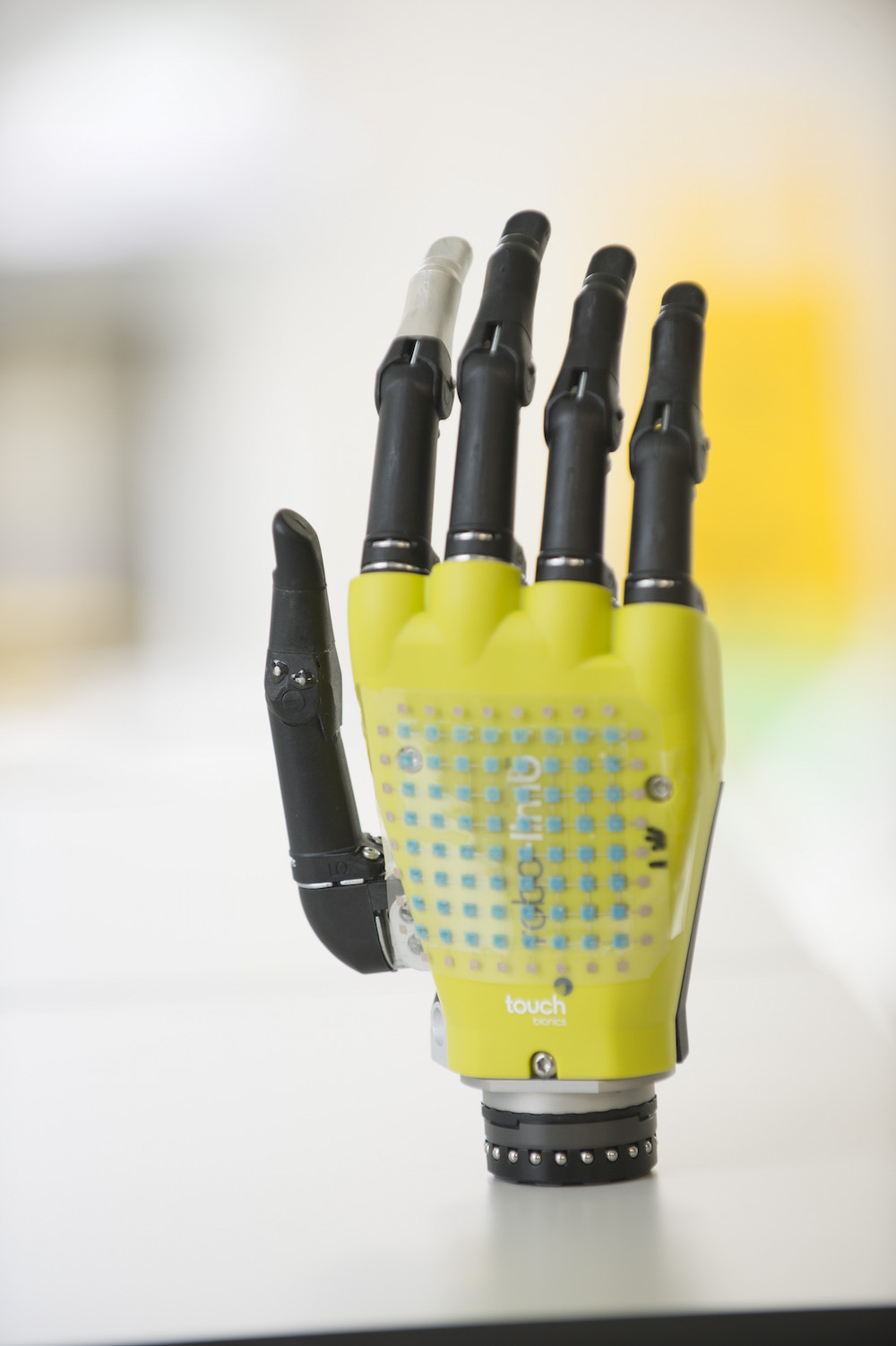Sunlight Powers This Touch-Sensitive, Prosthetic Skin

The quest to engineer touch-sensitive "synthetic skin," which could one day help amputees feel pressure or contact on their prosthetic limbs, is a hot topic for researchers. But a problem plagues this engineering effort: how to provide an energy source for such skin so that it can send signals.
Now, one research team has a potential solution: They've made synthetic skin that can be powered by sunlight.
The new development is the first touch-sensitive synthetic skin with solar-powered cells integrated into the skin itself, said the study's principal investigator, Ravinder Dahiya, a professor of electronic and nanoscale engineering at the University of Glasgow in Scotland.
Dahiya and his team made the transparent skin out of four thin layers: solar cells on the bottom, followed by polyvinyl chloride (PVC, a thin synthetic plastic), a single layer of graphene and a type of silicone on top, they said. The skin is not only touch-sensitive, but also ultrathin and flexible, the researchers reported in their findings, published online March 22 in the journal Advanced Functional Materials.
In addition to helping people who wear prosthetics, the solar-powered skin could one day help robots sense touch, the researchers said. [Super-Intelligent Machines: 7 Robotic Futures]
Graphene, which makes up the third layer of the artificial skin, is a highly flexible type of the mineral graphite. The material is just a single atom thick, stronger than steel and electrically conductive. Because graphene is clear, 98 percent of sunlight that hits its surface can pass directly through it, making it an ideal material to use with solar cells, the researchers said. Dahiya and his team initially considered other energy sources for the skin, including vibration-based energy-harvesting and triboelectric processing (a fancy name for static electricity). But solar energy made the most sense, in part because it generated the most electricity, Dahiya told Live Science.
The researchers tested out the skin by putting it on a bionic hand called an i-limb, Dahiya said. Light that was shined on the skin instantaneously powered the tactile senses on it, he said.
Sign up for the Live Science daily newsletter now
Get the world’s most fascinating discoveries delivered straight to your inbox.
"Human skin is an incredibly complex system capable of detecting pressure, temperature and texture through an array of neural sensors which carry signals from the skin to the brain," Dahiya said in a statement.
The new skin allowed the prosthetic hand to perform "challenging tasks, like properly gripping soft materials, which other prosthetics can struggle with," Dahiya said. In addition, the skin can detect pressures as low as 0.01 lbs. per square inch (0.11 kilopascals), he said.
The skin needs just 20 nanowatts of power per 0.1 square inches (1 square centimeter). To put that in perspective, a regular light-emitting diode (LED) light bulb takes about 5 watts to shine; 1 nanowatt is one-billionth of a watt.
After the researchers submitted their paper for publication, they figured out how to store solar energy in the skin using graphene-based devices, Dahiya said.
This technology could also help robots make safer decisions when they interact with people, he added. [9 Odd Ways Your Tech Devices May Injure You]
"A robot working on a construction line, for example, is much less likely to accidentally injure a human if it can feel that a person has unexpectedly entered their area of movement and stop [moving] before an injury can occur," Dahiya said in the statement.
The group's next goal is to develop a similar technology that can power the prosthetic hand itself, including its motors, Dahiya said.
"This could allow the creation of an entirely energy-autonomous prosthetic limb," he said.
Original article on Live Science.

Laura is the archaeology and Life's Little Mysteries editor at Live Science. She also reports on general science, including paleontology. Her work has appeared in The New York Times, Scholastic, Popular Science and Spectrum, a site on autism research. She has won multiple awards from the Society of Professional Journalists and the Washington Newspaper Publishers Association for her reporting at a weekly newspaper near Seattle. Laura holds a bachelor's degree in English literature and psychology from Washington University in St. Louis and a master's degree in science writing from NYU.











